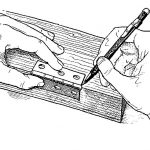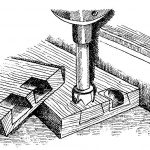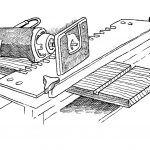We may receive a commission when you use our affiliate links. However, this does not impact our recommendations.
 Many years ago my carpenter square mysteriously disappeared at the start of my basement finishing project. So I started using a butt hinge to mark lumber. It worked better than I had hoped. My carpenter square is still hiding from me, but I still use a 31⁄2″ x 31⁄2″ full-mortise butt hinge for transferring my layout marks for trim work.
Many years ago my carpenter square mysteriously disappeared at the start of my basement finishing project. So I started using a butt hinge to mark lumber. It worked better than I had hoped. My carpenter square is still hiding from me, but I still use a 31⁄2″ x 31⁄2″ full-mortise butt hinge for transferring my layout marks for trim work.
The real advantage of using a hinge is that it allows you to bring lines around corners, such as when you’re marking out a tenon, with minimum error. When choosing a hinge for this purpose, select one without a finial (which will get in the way of your line) and one without a lot of slop between the leaves and the hinge pin. The tighter the hinge, the more accurate your layout lines will ultimately be.
– Milo Meyers
If you’re interested in learning more tricks like this one, check out “601 Woodshop Tips and Tricks.”
Here are some supplies and tools we find essential in our everyday work around the shop. We may receive a commission from sales referred by our links; however, we have carefully selected these products for their usefulness and quality.









